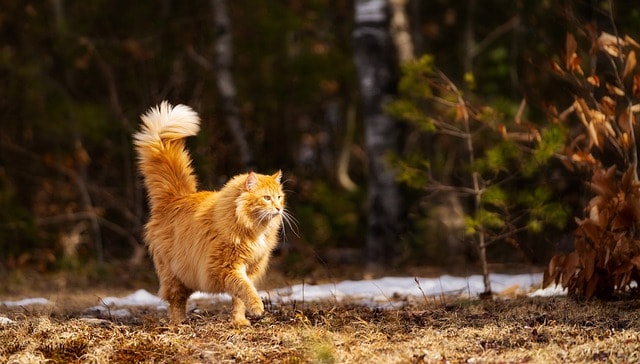
Cats of all colors or almost and very often imaginatively combined even within the same litter, but when an orange cat appears, then it is really very special, not only for the nuances that their coat takes on. Orange cats, very often called reds, are especially loved, undoubtedly catch the eye and are charming. Let’s get to know them better to understand if there is a connection between the color of the fur and the character of these animals, or with their health. What is special about these cats, besides their fur?
Orange cat and breeds
There is no orange cat breed. There are many breeds that can have orange fur in their range of colors, and there are also cats that have no breed but are beautifully orange. In fact, the cat breed is not defined by the color of the hair, but by much more numerous physiological and genetic characteristics. Cats of the same color therefore do not necessarily belong to the same breed, except in very special cases.
Orange cat: character
For the moment it is just a rumor, but it would seem that every orange cat has a sociable and affectionate nature. Having said this it seems absurd and probably not all orange cats are really like that but it could be that the color of the hair is somehow connected with characteristics that affect the nature of the animal. It should be noted that for now there are no scientific data to support this thesis, it is a rumor, a belief, but those who know about cats and frequent them are often quite convinced.
Always orange cats are also very sweet and at the same time tremendously lazy. Yes, it is true that all cats are lazy but probably those with orange fur are more so and they love cuddling but when you pick them up they get annoyed, they want to stay where they are and be the center of our attention. Let’s imagine it a bit like Garfield, the famous lazy orange cat par excellence, although we must not take these indications too literally because each cat has its own personality.
A study on the character of orange cats, claiming that they would be more affectionate than others, but there is still no scientific evidence for this. However, there is a general benevolence towards cats with this colored coat.
Orange cats: types
Not all orange cats are the same orange and there are so many hair differences. The shades range from pale orange to bright orange, up to an almost brick color. Furthermore, let’s not forget the orange and brindle cats, among the most fascinating, and there are also those with stripes or marginal spots of other colors.
Beyond the color, we can see that most cats with fur of this color are orange. This has led many to believe that for some genetic reason there could not be any females with that hair but this is not the case, on paper, even if the statistics seem to show the opposite because only one in three orange cats is female. We can explain these data with the combinations of genes, the one responsible for this color is found in the X chromosome and the cats have two X chromosomes. For this reason, the gene of this color must be present in both in order not to remain latent. This does not happen in males who have XY chromosomes and therefore to be orange they must have only one X chromosome with this gene.
We did a similar speech when we talked about the tricolor coat of female cats. Cats can’t have it like that because two X chromosomes are needed to have a tricolor.
Orange cats: curiosity
It is not only black cats that are victims of ancient prejudices, even the orange ones are the protagonists of a series of urban legends but which in this case are completely positive. In fact, it seems that when felines have orange fur, they bring luck and protect us, so it is excellent to have one at home, whether it is purebred or not.
Even in the Holy Scriptures there is a reference to red cats and their “powers”. In fact, it is said that one of them approached Jesus when he was very young, starting to purr and rub against him to make him fall asleep and calm him in the night. Maria greatly appreciated this attention from the animal and gave him a kiss on the head to thank him, thus leaving an M-shaped mark on her head. Indeed, many orange cats have this sign of recognition.
All these stories should not lead us to choose a cat based on color, or at least we can do it for aesthetic sense but without hoping to predict its character. Even in this, cats are very independent and irreverent, they don’t follow the rules and they know how to surprise us.






